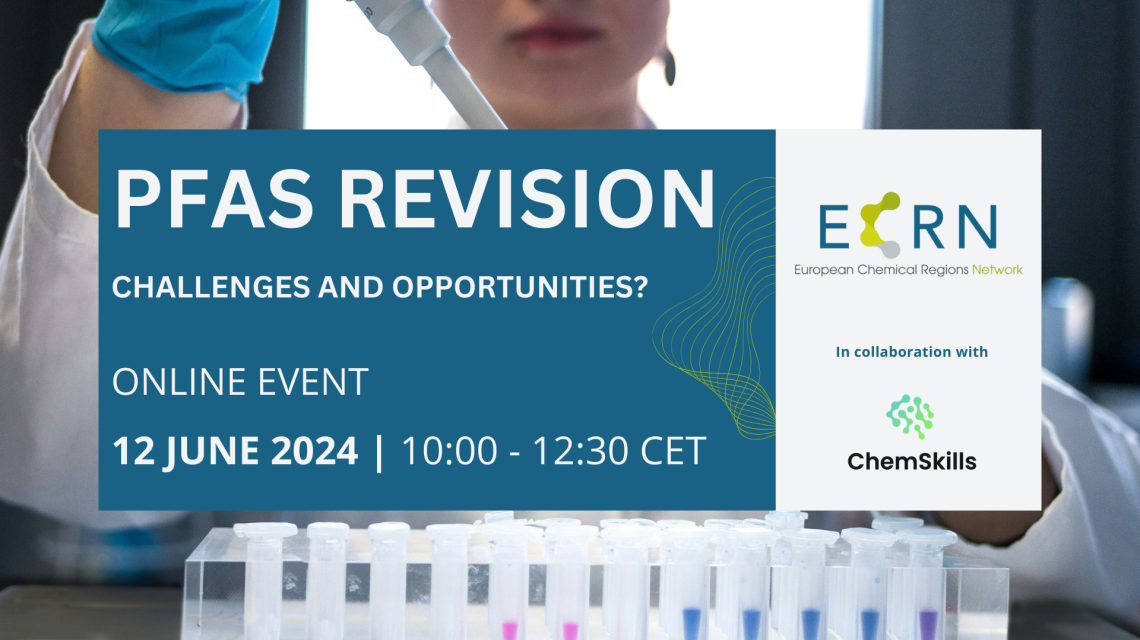Brussels, June 13, 2024 – The European Chemical Regions Network (ECRN) organized on June 12th a pivotal online event focusing on the challenges and opportunities surrounding the revision of PFAS regulations. The event, a key component of the ChemSkills project, attracted a diverse group of stakeholders including representatives from the European Commission, industry leaders, regional authorities, and academic experts to deliberate on the significant impacts of recent PFAS legislative developments.
The discussion began with an update on the state of PFAS restrictions under the REACH legislation, highlighting the ongoing efforts to phase out non-essential uses of PFAS by 2030. This included the development of a chemical strategy for sustainability, emphasizing the need to balance environmental and health concerns with the socio-economic impacts on industries reliant on PFAS.
A comprehensive global overview of PFAS regulation was provided, comparing approaches in the European Union, United States, Canada, and the United Kingdom. The importance of international collaboration in harmonizing PFAS regulations to protect human health and the environment was stressed.
Insights into the regional’s approach to managing PFAS were shared, detailing specific measures to minimize PFAS emissions and the active lobbying for balanced national legislation.
Industry representatives voiced significant concerns regarding the proposed PFAS restrictions, particularly emphasizing the essential role of fluoropolymers in various applications such as cookware. They highlighted the adverse economic impact of a blanket ban on PFAS and the need for a distinction between different types of PFAS, particularly fluoropolymers, which they argued do not pose the same risks as other PFAS.
The feasibility of alternatives to PFAS in various applications was discussed, with an emphasis on the lack of viable substitutes for fluoropolymers in critical sectors. Participants pointed out the potential negative consequences of the current restriction proposals and stressed the importance of justified PFAS regulation based on scientific evidence.
Throughout the discussions, there was a consistent emphasis on the urgent need for research and innovation to find alternative solutions to PFAS. Investing in research and development was highlighted as crucial to identifying viable alternatives that can replace PFAS without compromising on performance or safety. This call for innovation included not only finding new substances but also improving existing technologies and processes to reduce PFAS emissions and enhance environmental safety.
Please find attached the speaker’s presentations:



